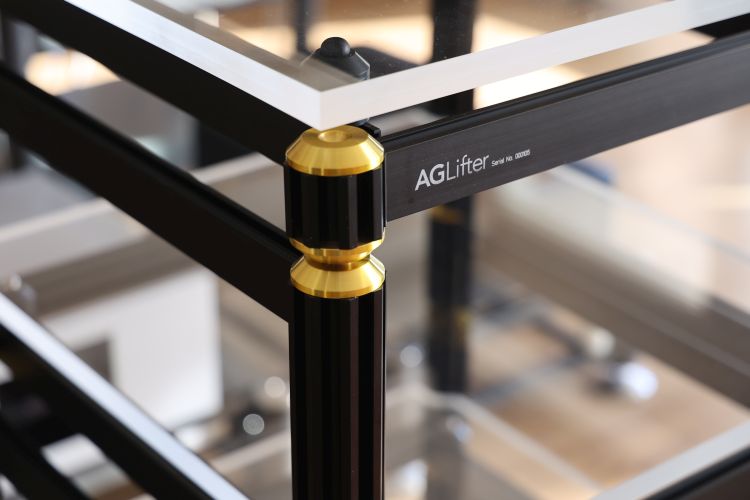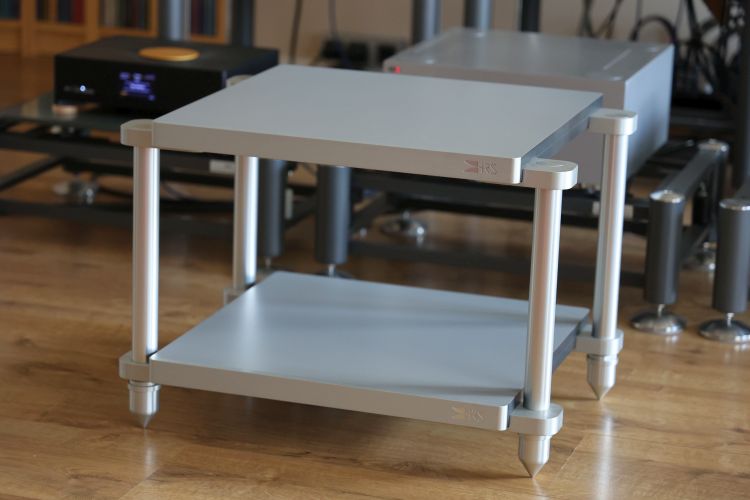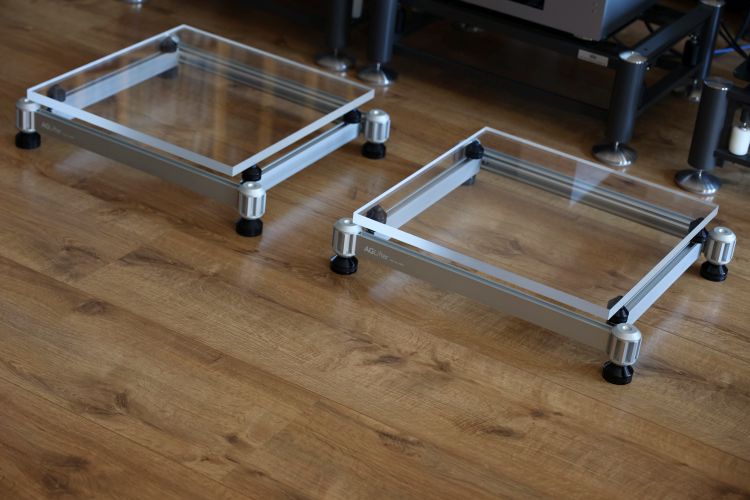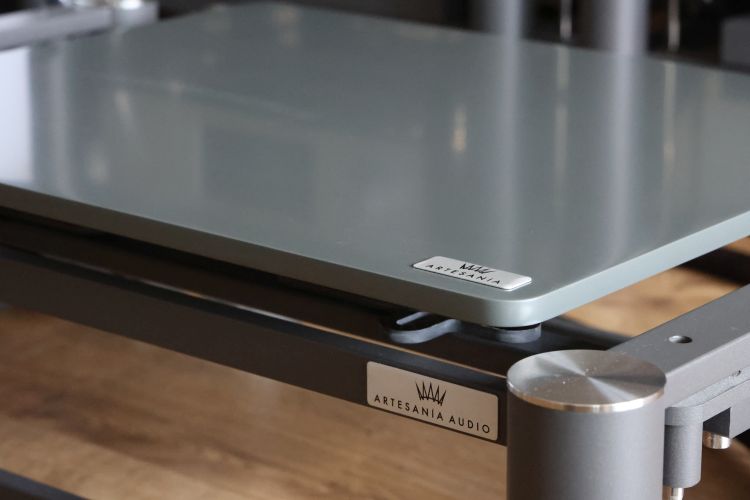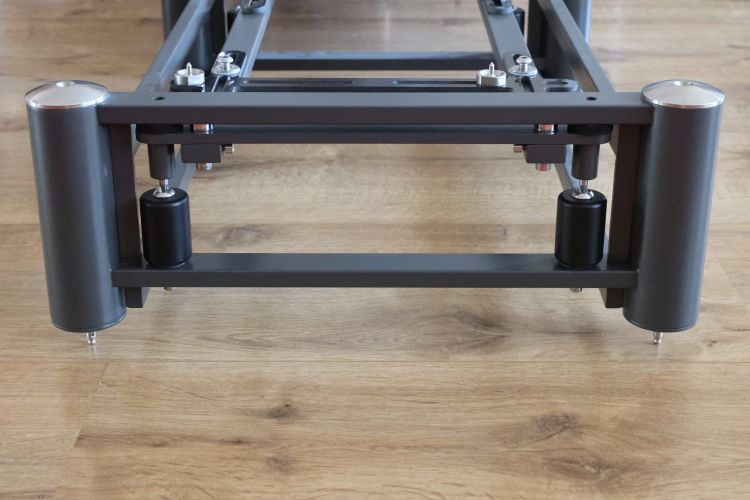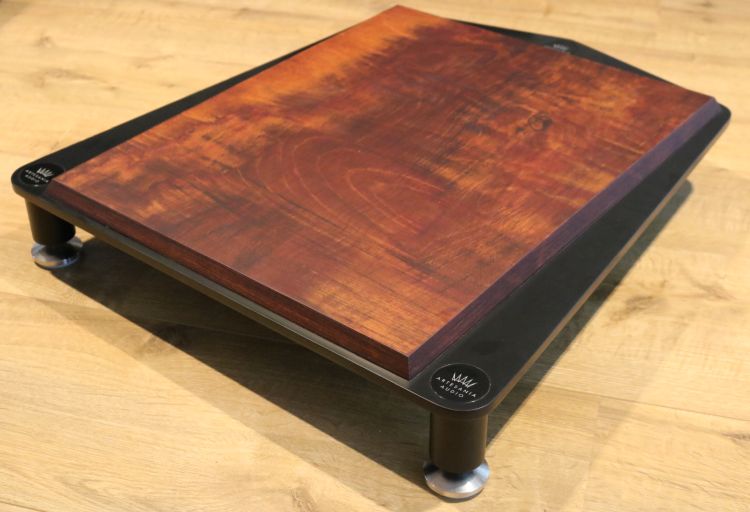Finite Elemente Spider and Solid Tech Rack of Silence
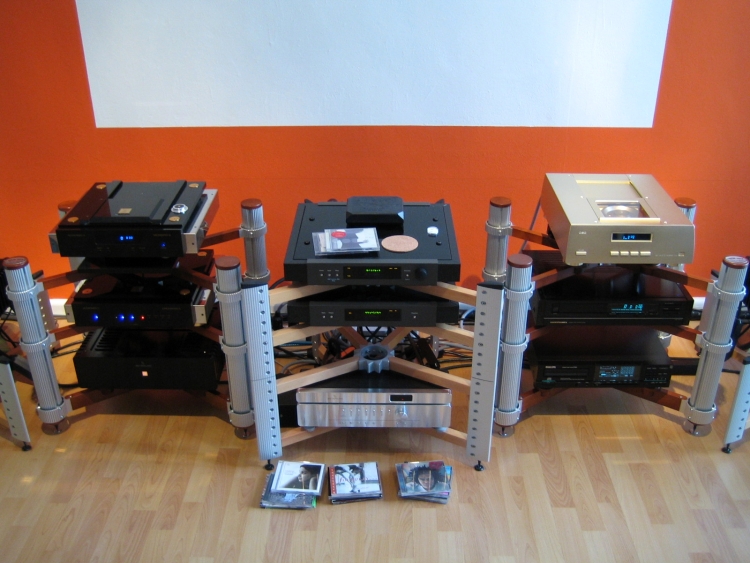
Over the last years I have owned and sold many Finite Elemente Spider Racks. This is due to my ever changing system as well as my ever changing convictions about the room setup. The Spiders provide great sound and are superbly versatile and eternally configurable. But when I learned of the Solid Tech Rack Of Silence I was struck by their classy appearance. The more I though of them, the more I noticed them at audio shows and on photos on the internet.
Would they sound the same, or perhaps even better than Spider? At the price one should hope so: they’re almost twice as costly. When my system had grown to epic proportions, I bit the bullet and decided that two ROS would replace the temporary Target audio racks.
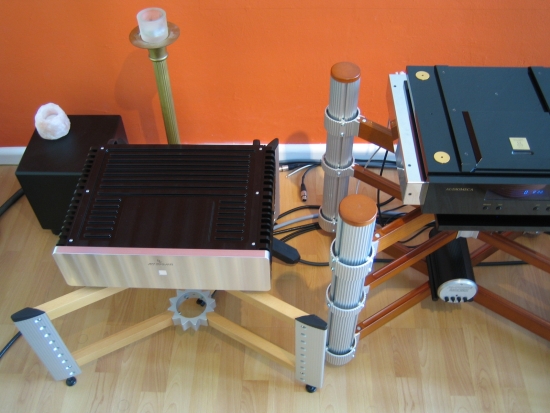
The differences in appearance and construction
The differences in construction are very clear in this picture taken from above. The most important difference is that with the ROS one cannot add a level after assembly of the rack, something that is easily possible with Spider. The latter however can only be moved one pre-drilled hole at a time while the ROS levels can literally be moved freely.
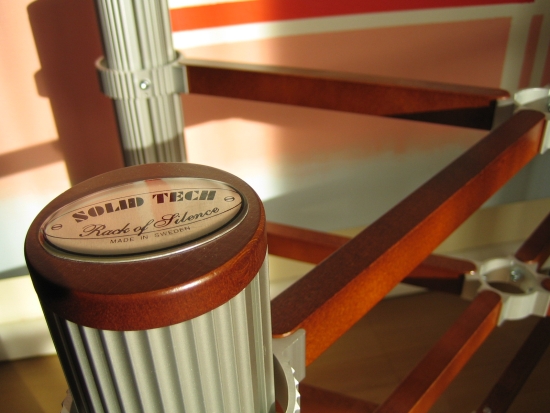
The Solid Tech Rack of Silence is a rack with a classical appearance, and construction more or less similar to Finite Elemente Spider. For solidity the racks are more or less a match: both have some play, but only in the rotational plane, not left to right or front to back.
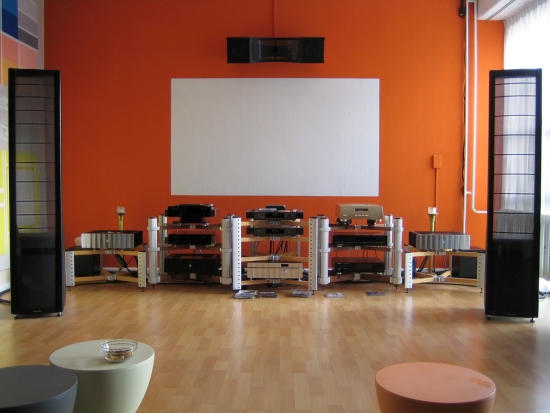
Spider and ROS in my system in its most expanded form
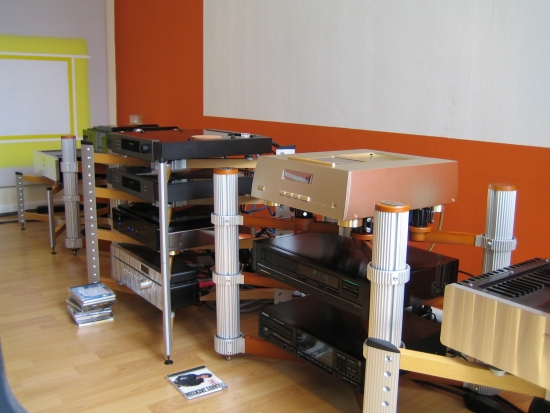
As mentioned above, ROS levels can be vertically positioned freely. This has both advantages and disadvantages because it can be nice to be able to precisely compensate for a component with an uneven bottom, although this is to some extent also possible with Spider due to the small amount of play in the struts prior to fixing them to the aluminum parts. Also, the Spider’s pre-drilled holes make it easy to decide of level height. With ROS you have to use a measure lint, and really plan ahead properly, because you cannot add levels in-between after assembly. You can of course lower the top one and slide another on. Finally, there’s the vertical extendability, where for Spider you can start with 30 cm and keep adding to the base. With ROS, you decide on one of three available heights prior to purchase and that’s it and you can’t add height afterwards. ROS is slightly wider than Spider and looks, and actually is, heavier.
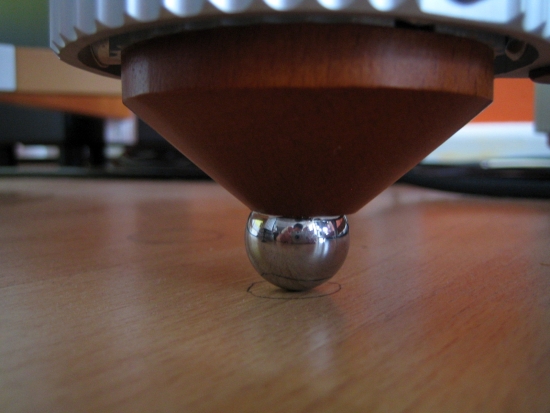
Above: initial version of the ROS. The current version of the rack has spikes instead of the metal balls
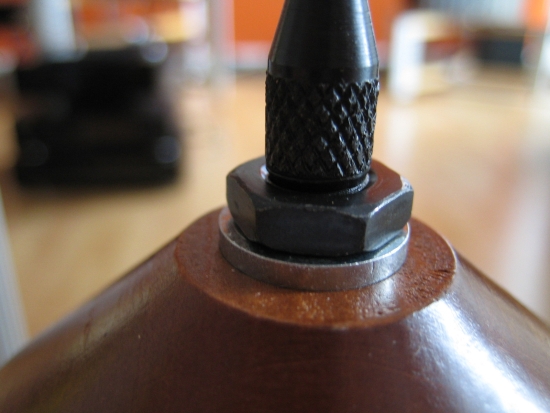
Above: current version of ROS uses spikes
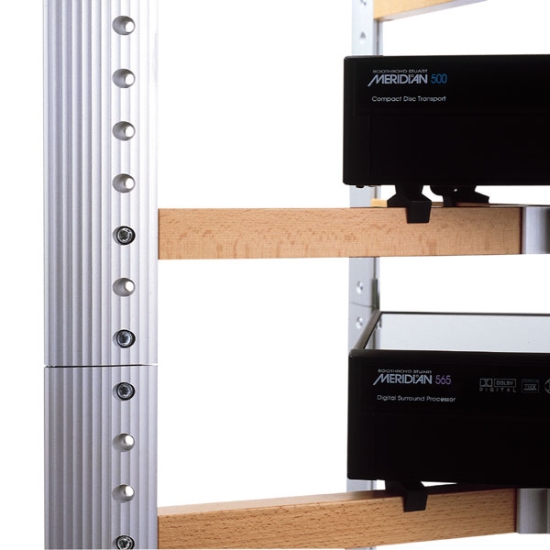
Above: Spider rack with standard RCI coupling elements (soft plastic/rubber) (also compatible with ROS)
ROS versions
Current versions of the ROS have spikes instead of metal balls to couple to the floor. Also, the system of slits and metal balls on the wood struts for component coupling has been revised, now replaced with aluminum feet that resemble the Spider RCI elements. The new ROS feet can slide freely over the wood struts while the rubber pad on top makes the component stay nicely in place. While much less fiddly than the free-rolling balls, the new feet sound markedly different: softer and less apparently dynamic. While they work perfectly, I prefer using Finite Ceraballs on the ROS.
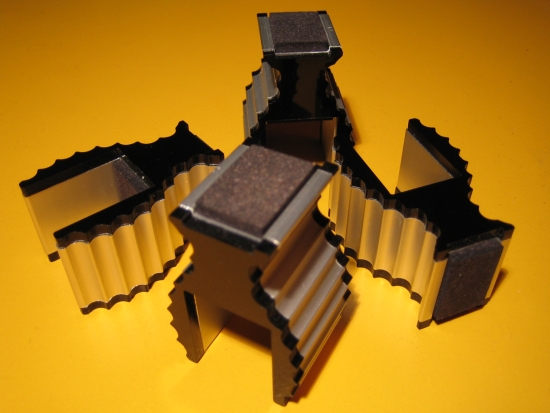
Above: these feet are included in current ROS
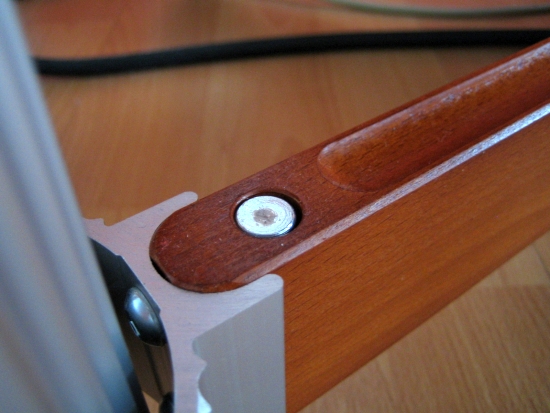
Above: the classy looking slits are removed on later models of the rack, the ball coupling system replaced with a more sensible system.
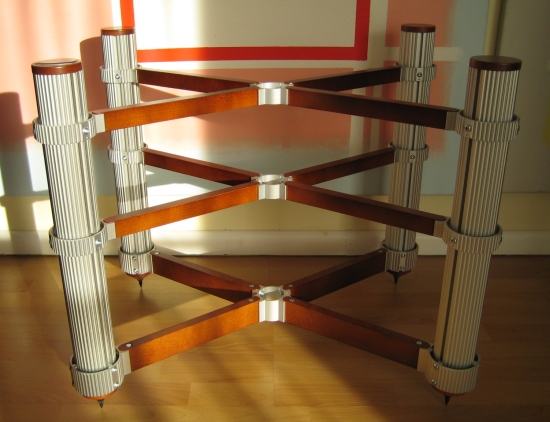
Current version ROS without slits in the wood struts, and no more metal balls anywhere
The differences in Sound
Soundwise the ROS is more different from the Spider than one would expect based on their appearance. ROS is more powerful in the bass and sounds more rooted, Spider is more open, agile and airy. What the racks have in common is the way that they both lay bare the character of the components placed on them, without adding any coloration.
ROS versions
The comparison above was made with the initial versions of the ROS, with metal balls as footers under the racks using an Audiomeca Mephisto II transport + Enkianthus DAC and a Marantz CD94II CD player all supported with Finite Elemente Ceraballs. Current ROS racks have spikes instead, and while this change made the ROS sound faster and tighter, its basic character remains intact, and the rack still sounds markedly different from Spider.
The original ball coupling between the component and the level’s wood struts was fiddly but sounded very good. The Spider-like feet that replaced the original ball system works beautifully and looks the part, but sounds entirely different: very fluid and supple, but at the expense of transient sharpness and overall somewhat soft compared to the hard coupling metal balls. While the Spider RCI elements already sound relaxed compared to Ceraballs, in direct comparison with the Spider RCI elements, the ROS feet sound even more fluid and relaxed. Using Spider Ceraballs brings the sound closer again to the original metal-balled ROS sound.
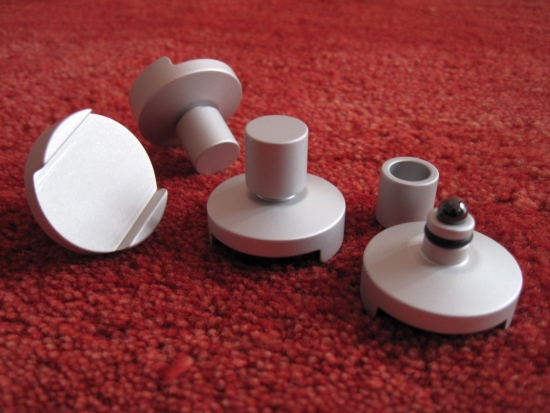
Above: Finite Elemente Spider Ceraball
Footers
For Spider the choice is simple: either you use the supplied RCI elements or you get the optional Ceraballs. For ROS there is however a host of options, that all have a large influence on the sound.
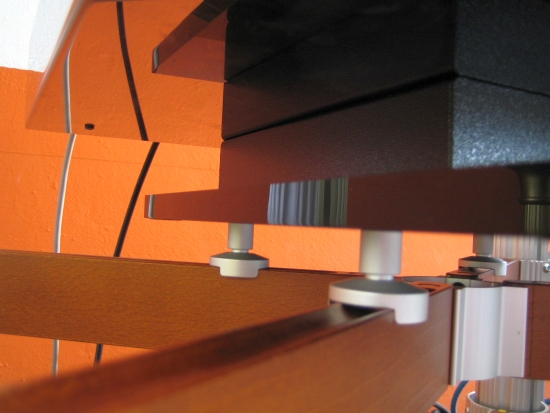
Above: Finite Elemente Ceraball can be used on the ROS, and soundwise this works very well. The wood struts are slightly more narrow than the Spider struts, but this is not a problem and the support is still plenty sturdy. Actually, all Spider accessories are compatible with ROS, but not the other way around.
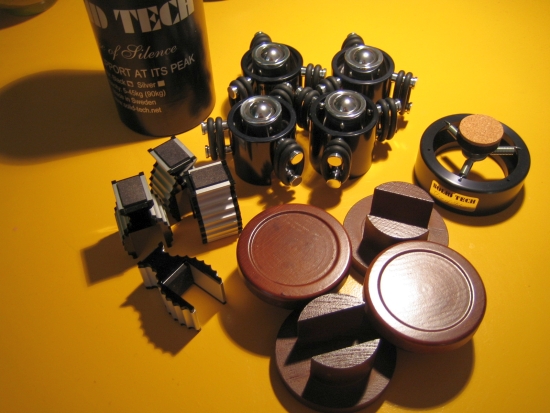
Next to the supplied standard feet for ROS, there are the Feet Of Silence and the Discs Of Silence.
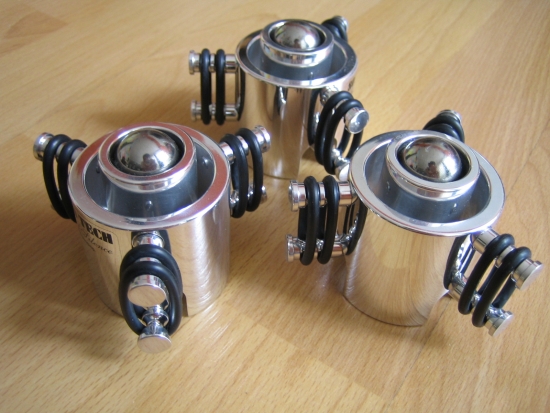
Feet of Silence
FOS can be used on the original version of ROS as well as on the current version. They cannot, however, be coupled directly on the ROS, but must be used together with separately available wood supports. These supports don’t cost much but are not precision-made. Of the 3 sets I have, only 1 set can be assembled that is not too wobbly.
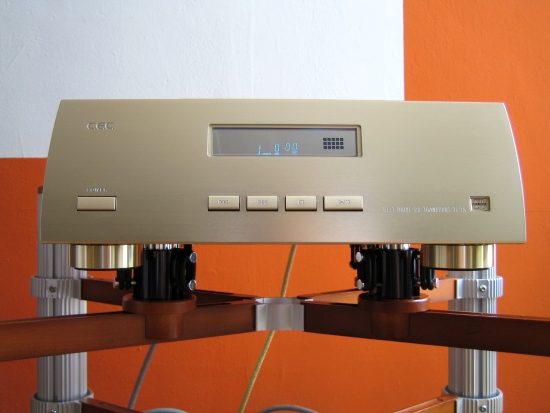
The wobbliness however probably also provides some “freedom” in the sound as well, which comes in handy for use on the ROS bottom level, which otherwise can sound quite over-controlled. This is a symptom that I hear with both racks, but more so with ROS more than with Spider.
The FOS are remarkable in construction. They utilize combined coupling/decoupling/damping techniques that result in a fluid and relaxed sound, with slightly rounded transients. This can work very well in terms of reducing any hardness in the system. When used in combination with the CEC TL1x belt-driven CD transport they seem to enhance the player’s inherent fluidity which on the one hand is nicely soothing but on the other hand, takes away a little too much pace.
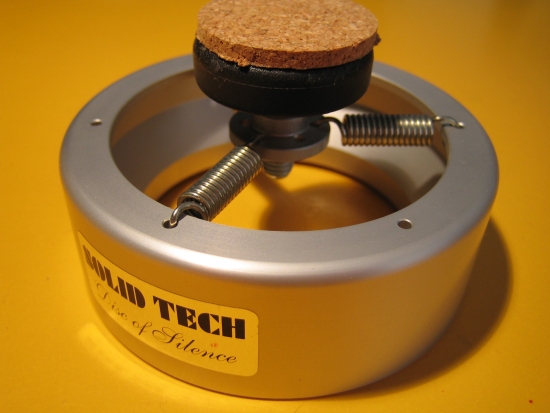
Discs of Silence
The Discs change the sound exactly as you would expect, making the sound more relaxed and easy-going. Alas, as with the FOS, the gain in flow is accompanied by a reduction in PRAT and liveliness.
Compared to the FOS, the DOS seem to be a little too much over the top, in my system at least, the sound becomes just too mellow.
In conclusion, you could say that all the optionally available Solid Tech footers are soft-couplers and do the opposite of Finite Elemente Ceraballs which are of course hard-couplers. In addition to making the sound more fluid and gentle mannered, the soft coupling provided by the FOS and DOS also makes it harder to get a component to sit exactly level due to internal weight differences, and it can take some getting used to when operating components when they are rocking back and forth. With the top loaded CEC as well as with normal CD players with a drawer I found this unpleasant in operation.
Decoupling on the level itself
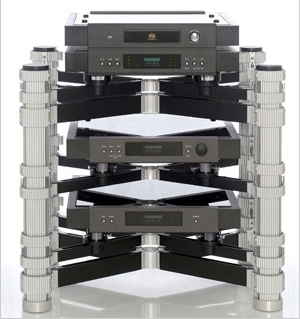
Above: this is the version of the rack that made me want to own them. Note the double construction of the levels? They are all suspended from extra aluminum rings with metal springs. While I have not tested this manner of decoupling I imagine that the result is very much comparable to the result obtained with the Discs Of Silence.
Overall
Personally, I find the ROS more classy looking than the Spider racks. Although they look more solid than Spider, the difference in stability is very small. Their sound bears similarities such as a lack of coloration and a clean presentation, but other than that, the racks do sound quite different. ROS is more powerful in the bass and sounds more rooted and Spider is more open, agile and airy. ROS can be tailored to sound more fluid and relaxed by means of optionally available footers such as the FOS and DOS while Spider can be tailored to sound more upbeat and articulate. In summary these are visually similar racks that, especially when using their respective optional footers, cater to different parts of the audiophile spectrum.


